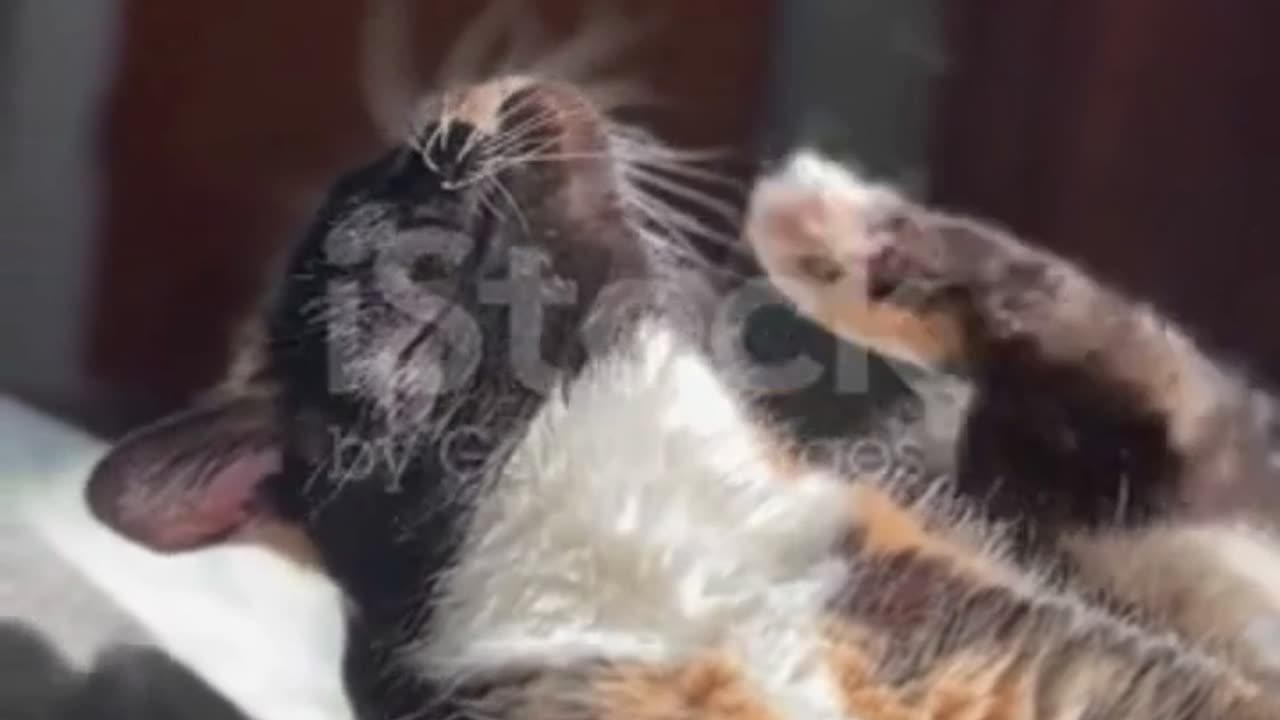Premium Only Content

1. History: Persian cats have a long and storied history, with their origins dating back to ancient Persia (modern-day Iran). They were introduced to Europe in the 1600s and quickly gained popularity due to their luxurious appearance.
2. Coat: One of the most defining features of Persian cats is their long, thick, and silky coat. They require regular grooming to prevent matting and keep their fur in good condition. Many owners opt for professional grooming or dedicate time daily to brushing their cat's coat.
3. Facial Structure: Persian cats have a distinctive brachycephalic (flat-faced) appearance. Their faces have a flat nose and a prominent forehead. This unique facial structure is often referred to as "brachycephalic" and can lead to certain health issues, including respiratory problems.
4. Temperament: Persian cats are known for their calm and placid personalities. They tend to be laid-back and enjoy lounging around the house. They are affectionate with their owners and can form strong bonds. While they are not usually very active or playful, they appreciate a quiet and serene environment.
5. Colors and Patterns: Persian cats come in a wide range of coat colors and patterns, including solid colors (such as white, black, and cream), bi-color, and various tabby patterns. Their striking appearance makes them a popular choice among cat enthusiasts.
6. Health Considerations: Persian cats are prone to some health issues, including brachycephalic airway syndrome, dental problems due to their flat faces, and polycystic kidney disease (PKD). Regular veterinary check-ups and a carefully balanced diet are essential to their well-being.
7. Lifespan: With proper care, Persian cats can live an average of 12 to 16 years or even longer. Their longevity often depends on genetics, diet, and the quality of care they receive.
8. Indoor Living: Due to their long fur and gentle disposition, Persian cats are best kept as indoor pets to protect them from environmental hazards and to maintain the cleanliness of their coat.
9. Adaptability: Persian cats are adaptable to various living environments, from apartments to houses, as long as they receive the attention, grooming, and care they require.
10. Hypoallergenic: Persian cats are not hypoallergenic and can trigger allergies in some individuals due to their shedding fur and dander. Allergy-prone individuals should be cautious when considering this breed.
In summary, Persian cats are known for their striking appearance, calm temperament, and luxurious coat. They can make wonderful companions for people who are willing to invest time in grooming and provide a peaceful home environment.
-
 LIVE
LIVE
The Jimmy Dore Show
1 hour agoJoy Reid DUMPED by MSNBC! European Leaders Warn of the Dangers of Peace! w/ John Mearsheimer
13,677 watching -
 LIVE
LIVE
Akademiks
4 hours agoDrake and PartyNextDoor '$$$4U' Album Sells 250K first week. BIG AK IS BACK.
3,118 watching -
 LIVE
LIVE
MyronGainesX
3 hours ago $14.83 earnedDan Bongino Named As Deputy Director Of FBI And CPAC Recap
2,645 watching -
 DVR
DVR
vivafrei
3 hours agoBarnes Live from Seattle - Defending Benshoof in a Case that is CRAY CRAY!
50.3K17 -
 2:12:12
2:12:12
Robert Gouveia
3 hours agoLiberals EXPLODE over Elon's Email; Lawsuits FLY; Sanctions?? Congrats Dan!
30.7K6 -
 1:33:36
1:33:36
Redacted News
4 hours agoBREAKING! PUTIN LAUNCHES MASSIVE OFFENSIVE IN UKRAINE AS EUROPEAN LEADERS PUSH FOR MORE WAR
89K167 -
 44:39
44:39
Kimberly Guilfoyle
4 hours agoBetter Days Ahead for the FBI, Live with Asm Bill Essayli & John Koufos | Ep.199
43.1K23 -
 1:40:29
1:40:29
In The Litter Box w/ Jewels & Catturd
1 day agoWhat Did You Do Last Week? | In the Litter Box w/ Jewels & Catturd – Ep. 748 – 2/24/2025
92.6K30 -
 23:34
23:34
Stephen Gardner
4 hours ago🔥CNN PANICS over $5000 DOGE Dividend | Trump Orders bigger Audits
54.7K111 -
 1:53:54
1:53:54
The White House
6 hours agoPresident Trump Holds a Press Conference with President Emmanuel Macron of France
72.7K40